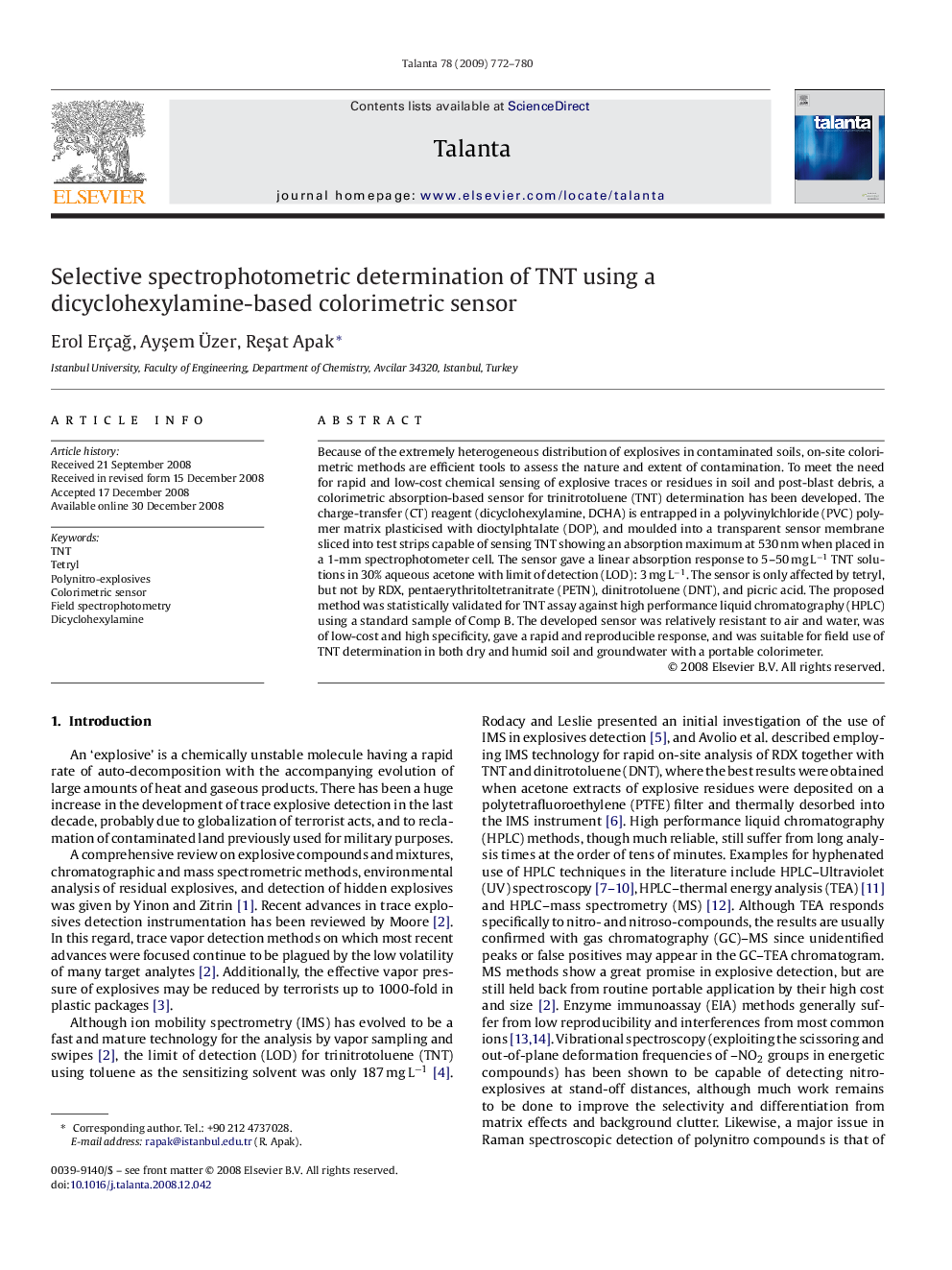| Article ID | Journal | Published Year | Pages | File Type |
|---|---|---|---|---|
| 1244901 | Talanta | 2009 | 9 Pages |
Because of the extremely heterogeneous distribution of explosives in contaminated soils, on-site colorimetric methods are efficient tools to assess the nature and extent of contamination. To meet the need for rapid and low-cost chemical sensing of explosive traces or residues in soil and post-blast debris, a colorimetric absorption-based sensor for trinitrotoluene (TNT) determination has been developed. The charge-transfer (CT) reagent (dicyclohexylamine, DCHA) is entrapped in a polyvinylchloride (PVC) polymer matrix plasticised with dioctylphtalate (DOP), and moulded into a transparent sensor membrane sliced into test strips capable of sensing TNT showing an absorption maximum at 530 nm when placed in a 1-mm spectrophotometer cell. The sensor gave a linear absorption response to 5–50 mg L−1 TNT solutions in 30% aqueous acetone with limit of detection (LOD): 3 mg L−1. The sensor is only affected by tetryl, but not by RDX, pentaerythritoltetranitrate (PETN), dinitrotoluene (DNT), and picric acid. The proposed method was statistically validated for TNT assay against high performance liquid chromatography (HPLC) using a standard sample of Comp B. The developed sensor was relatively resistant to air and water, was of low-cost and high specificity, gave a rapid and reproducible response, and was suitable for field use of TNT determination in both dry and humid soil and groundwater with a portable colorimeter.
